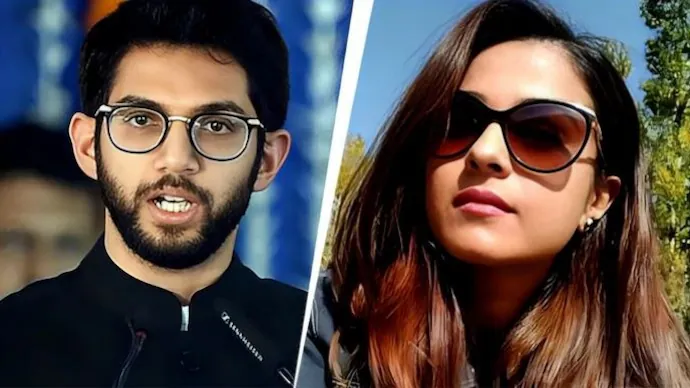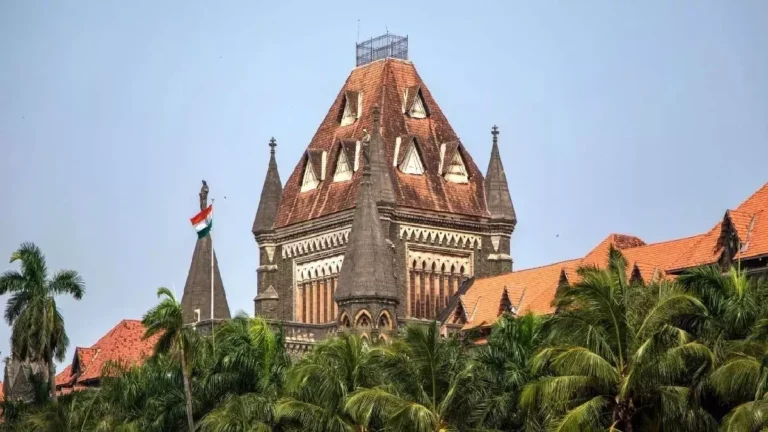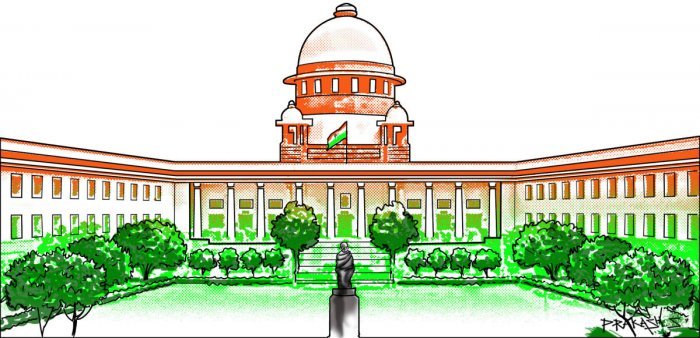Criminal Conspiracy and Fraudulent Reporting and dishonesty of Times of India and Vineet Jain Exposed :- Fake CBI Report Used to Defame Disha Salian’s Father and after receipt of legal notice the news was secretly altered to shift the blame on Mid- day and Hindustan Times.

“Journalism or Criminal Enterprise?” A staggering ₹2 Lakh Crore Defamation Suit and Criminal Prosecution Under IPC Sections 192, 193, 465, and 471 Now Underway.
The mask of fair journalism has fallen — TOI’s deliberate use of a non-existent CBI report, false accusations against Disha Salian’s father, and manipulated content have triggered one of the most serious legal offensives in Indian media history.
The Façade of Ethical Journalism Has Collapsed
“We Relied on Someone Else’s Report” Is Not a Legal Defence available to any media Houses.
Digital Evidence Destroys TOI’s Defence — Archived Reports, Videos, and Screenshots Reveal Pre-Meditated Cover-Up
Times of India and its parent company Bennett Coleman & Co. Ltd. and their head Vineet Jain have been exposed for orchestrating a deliberate media fraud targeting Mr. Satish Salian, the father of the late Disha Salian. In a now-debunked news report, TOI falsely claimed that the Central Bureau of Investigation (CBI) had filed a closure report blaming Mr. Salian for his daughter’s death.
However, the CBI has officially clarified that no such investigation was conducted, nor does any such report exist in its records. This revelation exposes the deliberate falsity and dishonesty of TOI and its leadership. Using the name of a premier investigative agency to publish fake content amounts to serious criminal offences under the Indian Penal Code, including impersonation of a public authority, misleading the public, and obstruction of justice.
TOI’s Legal Reply Exposed as Fabricated — A Post-Facto Attempt to Mislead the Court
In its legal reply dated 26 July 2025, the Times of India (TOI) falsely claimed that its article dated 28 March 2025 was based on prior reports published by Mid-Day and Hindustan Times. However, this claim is demonstrably false and entirely fabricated, as established by verifiable digital records and court-submitted evidence.
The original version of the article published on 28 March 2025 contained no reference whatsoever to Mid-Day or Hindustan Times.
These references were clandestinely inserted into the article on 18 July 2025, shortly after TOI was served with a ₹2 Lakh Crore defamation notice — clearly intended to manufacture a backdated justification and evade legal accountability.
This deliberate alteration of published content constitutes a classic case of post-facto fabrication of evidence — an unlawful act designed to mislead the Court, distort the factual record, and escape the consequences of deliberate defamatory publication.
Such conduct not only undermines the integrity of judicial proceedings but also attracts criminal liability under IPC Sections 192 (fabrication of false evidence) and 193 (false evidence in judicial proceedings). It reflects a conscious and calculated abuse of process, warranting stringent penal consequences.
⚠️ The Façade of Ethical Journalism Has Collapsed
The once-respected banner of ethical journalism now lies in disrepute as TOI and its Managing Director, Vineet Jain, face mounting legal consequences for publishing a malicious and fabricated report. The original article, published on 28 March 2025 through The Economic Times (a TOI Group platform), falsely alleged that the CBI had concluded its investigation into Disha Salian’s death by blaming her father — an assertion completely disowned by the CBI.
Rather than retracting or issuing an apology, TOI silently edited the article after receiving a legal notice, inserting new references to Mid-Day and Hindustan Times to shift the blame onto other media outlets. However, forensic digital evidence — including archived webpages, video recordings, screenshots, and data dumps — irrefutably proves that no such references existed in the original version.
This calculated cover-up, followed by the submission of a false legal reply, constitutes fabrication of evidence and contempt of court. Consequently, criminal proceedings under IPC Sections 192 (false evidence), 193 (false statement in judicial proceedings), 465 (forgery), and 471 (use of forged documents as genuine) are now underway.
Tampering with Evidence After Publishing False Report Is a Distinct Criminal Offence
The gravity of the misconduct by the Times of India (TOI) extends far beyond the initial act of publishing false and defamatory content. After being served with a legal notice, TOI engaged in a deliberate post-notice cover-up by silently altering the original article and submitting a misleading and fabricated legal reply. This conduct constitutes a separate and independent offence of fabrication of evidence and obstruction of justice, punishable under the following provisions of the Indian Penal Code:
Section 192 – Fabricating false evidence for purpose of using in judicial proceedings
Section 193 – Punishment for Creating false evidence
Section 465 – Forgery
Section 471 – Use of forged document as genuine
As a result, both civil (defamation) and criminal prosecutions are now proceeding against the following individuals and entities:
Bennett Coleman & Co. Ltd.
Managing Director Vineet Jain
Associate Editor Derek D’Souza
Reporter Rosy Sequeira
Editorial staff and content team of Economic Times, a TOI Group platform
📂 Digital Evidence Obliterates TOI’s Defence
Independent digital archives and certified metadata confirm the following facts:
The CBI was never involved in any investigation or report concerning Disha Salian’s death.
The original TOI article did not cite Mid-Day or Hindustan Times as sources.
The post-notice edits were retrofitted to fabricate a legal cover story — clearly indicating criminal intent to mislead the court and escape liability.
Adv. Ishwarlal Agarwal (Counsel for Mr. Satish Salian) stated:
“This is not just bad journalism, it is premeditated criminal fraud. Publishing fake reports, destroying the evidence, altering the article post-notice, and finally misleading the court with a false reply — all of this was executed with a clear criminal intent.”
“On behalf of our client Mr. Satish Salian, we will soon initiate criminal proceedings under IPC Sections 192, 193, 465, 471, and others. This is not mere misinformation — it is a direct attack on the judicial process.”
🛑 “This is not just defamation — this is a criminal conspiracy!”
“TOI deliberately published false and misleading content to malign Mr. Salian’s image in society. This is a blatant breach of journalistic ethics, and an orchestrated effort to shield real culprits. We will pursue both civil and criminal actions. The defamation suit has already been served, and all supporting evidence is before the court.”
🟥 A Watershed Moment for Indian Media Accountability
This is no longer just about one grieving father’s defamation — this case has become symbolic of a deeper institutional rot, where white-collar crimes are committed under the protection of press freedom. Fabrication, forgery, and misinformation now appear to be tools in the hands of some media houses, used to serve vested interests and suppress inconvenient truths.
Unless the courts impose strict punishment and the public demands transparency and accountability, such tactics will continue to victimize innocent citizens and erode the very foundations of justice and democracy.
Ongoing ₹12 Lakh Crore Defamation Case Already Pending in Nagpur Court Against TOI
This isn’t the first such case. In another matter, senior journalist Prakash Pohare has already filed a ₹12 lakh crore defamation suit against TOI and others in the Nagpur Civil Court. The court has issued summons and has taken strict cognizance of the matter, including a plea for arrest and judicial custody of TOI directors if they fail to furnish a bank guarantee.
“This Is White Collar Crime Masquerading as Journalism”
“This is not a mere lapse in editorial judgment, nor an isolated instance of journalistic error — it is a systematic and premeditated operation bearing all the hallmarks of white-collar criminality.
When a media house undertakes paid assignments to publish false narratives, deliberately disseminates fabricated stories without verification, and then, when confronted, resorts to manipulating digital records and forging justifications to protect itself — it abandons its role as a public watchdog and becomes an instrument of organised deceit.
What makes this even more egregious is that such fabrications are then formally reduced into written legal replies for being presented before a court of law as purportedly legitimate defences. This act goes far beyond defamation — it constitutes a direct interference with the administration of justice, an attempt to mislead the judiciary, and an affront to the rule of law.
This is not journalism — it is white collar crime cloaked in the respectability of the press, executed with strategic malice, digital cover-up, and legal deception. It is designed not to inform the public, but to shield wrongdoers, discredit the innocent, and manipulate both public opinion and judicial forums.
Unless dealt with through swift and exemplary legal action, such misconduct will embolden others and set a perilous precedent — one where the media transforms from the fourth pillar of democracy into a shield for impunity and abuse of power.”
“We Relied on Someone Else’s Report” Is Not a Legal Defence available to any media Houses.
Indian law is unequivocal — a publisher cannot evade liability by claiming that it merely reproduced someone else’s reporting. The legal and moral responsibility for any false, defamatory, or fabricated content rests fully and exclusively with the publication under whose name the article is published.
This position has been upheld in multiple Supreme Court and High Court judgments, establishing that:
“Editorial responsibility cannot be delegated. A publication assumes full legal liability for the truthfulness and fairness of what it publishes.”
Hence, TOI’s defence is not only legally untenable — it is ethically bankrupt.
Its conduct reflects not just negligence but intentional deceit, designed to shield itself from legal accountability while continuing to harm the reputation and rights of innocent individuals.





